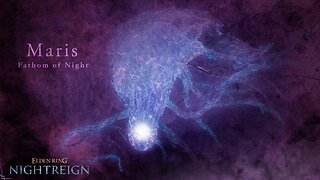Premium Only Content

Witness the Power of Theyyam: Kerala’s Divine Dance Ritual
Theyyam is a ritualistic and theatrical form of worship that originates from the Malabar region in Kerala, India. It combines dance, music, and elaborate costumes to honor and invoke deities, spirits, and ancestral heroes. Theyyam is an important cultural tradition, deeply rooted in the beliefs and practices of the local communities.
### Key Aspects of Theyyam:
1. **Performance**: Theyyam performances are highly dramatic and visually striking. The performer, usually a male, transforms into the deity being invoked, believed to embody the spirit during the ritual. The transformation involves elaborate makeup, ornate costumes, and headgear that can take hours to prepare.
2. **Mythological Background**: Each Theyyam is based on a specific legend or myth, often related to the Hindu pantheon, local deities, or spirits. The stories are passed down through generations and form the narrative of the performance.
3. **Ritual and Worship**: Theyyam is not just a performance but a form of worship. The performers are revered as living gods during the ritual, and the audience seeks blessings, guidance, and protection from them.
4. **Cultural Significance**: Theyyam is an important part of the cultural identity in northern Kerala, particularly in districts like Kannur and Kasaragod. It is often performed in sacred groves (Kavu) and family shrines during festivals and special occasions.
5. **Types of Theyyam**: There are over 400 types of Theyyam, each with unique characteristics and associated deities. Some well-known forms include *Gulikan Theyyam, Vishnumoorthy Theyyam*, and *Bhagavathi Theyyam*.
6. **Season**: The Theyyam season typically runs from November to May, coinciding with the post-harvest period, when people have time to engage in community rituals.
Theyyam is a living tradition that continues to thrive, offering a glimpse into the region's rich spiritual and cultural heritage.
-
 2:29:36
2:29:36
Laura Loomer
7 hours agoEP136: YOU'RE FIRED! White House Vetting Crisis Continues
52.4K24 -
 8:07
8:07
MattMorseTV
7 hours ago $5.51 earnedTrump just LOWERED PRICES by 75 PERCENT.
31.4K32 -
 LIVE
LIVE
Misfit Electronic Gaming
10 hours ago $3.68 earned"LIVE" "Blind Descent' +"Dollhouse of Dead" Playtest 10 Followers till we hit 1000! We CAN do this!
492 watching -
 21:53
21:53
Glenn Greenwald
9 hours agoMichael Tracey on the Street: What Do People Think of the Epstein Case?
124K57 -
 2:26:28
2:26:28
megimu32
6 hours agoOTS: Board Games Gone Wild! The Loud, Weird & Chaotic Games That Raised Us
33.7K9 -
 4:25:16
4:25:16
DamnDanieI
7 hours agoKill First, Loot Later – OTG Live
51.9K1 -
 56:41
56:41
Donald Trump Jr.
11 hours agoLies, Leaks, and Lawfare: Censorship Corruption Exposed | TRIGGERED Ep.263
174K158 -
 1:19:46
1:19:46
Precision Rifle Network
8 hours agoS4E25 Guns & Grub - Rex Is Back, I shot the 6.5PRC finally...
30.4K1 -
 5:42:52
5:42:52
rhywyn
5 hours agoうつ
18.5K4 -
 LIVE
LIVE
RyuMuramasa✧
7 hours agoNEW Everdark Sovereign | Elden Ring Nightreign | LIVE Playthrough
28 watching